if you'll to call
try {
ImageIO.write(rendered, filetype, new File(file + "." + filetype));
frame.dispose();
logger.trace("Tried to dispose the frame");
} catch (IOException e) {
logger.fatal(e.getMessage());
} finally {
logger.debug("Try to dispose the frame");
frame.dispose();
}
then code will be executed but
1) only if is done on EDT, otherwise ... outside EDT Top-Level Containers are sticked on the screen
or
2) Top-Level Containers missed method finalize(), then never will be GC'ed (some restriction based on resources from Windows NT/2000 that alive ...), then output from console is correct and stay remaind unchanged until current JVM instance exist there
3) create only one JFrame and re_use this container for another user action by
EDIT
rest of how set for DefaultCloseOperations and JFrame#dispose() you can test
in code that you posted here is the same as from JMenuItem in this code
import javax.swing.*;
import java.awt.*;
import java.awt.event.*;
import javax.swing.border.EmptyBorder;
public class ClosingFrame extends JFrame {
private JMenuBar MenuBar = new JMenuBar();
private JFrame frame = new JFrame();
private static final long serialVersionUID = 1L;
private JMenu File = new JMenu("File");
private JMenuItem Exit = new JMenuItem("Exit");
private JFrame frame1 = new JFrame();
public ClosingFrame() {
File.add(Exit);
MenuBar.add(File);
Exit.setBorder(new EmptyBorder(10, 10, 10, 10));
Exit.addActionListener(new ExitListener());
WindowListener exitListener = new WindowAdapter() {
@Override
public void windowClosing(WindowEvent e) {
int confirm = JOptionPane.showOptionDialog(frame,
"Are You Sure to Close this Application?",
"Exit Confirmation", JOptionPane.YES_NO_OPTION,
JOptionPane.QUESTION_MESSAGE, null, null, null);
if (confirm == 0) {
System.exit(1);
}
}
};
frame.addWindowListener(exitListener);
frame.setDefaultCloseOperation(EXIT_ON_CLOSE);
frame.setJMenuBar(MenuBar);
frame.setPreferredSize(new Dimension(400, 300));
frame.setLocation(100, 100);
frame.pack();
frame.setVisible(true);
frame1.addWindowListener(exitListener);
frame1.setDefaultCloseOperation(EXIT_ON_CLOSE);
frame1.setPreferredSize(new Dimension(400, 300));
frame1.setLocation(500, 100);
frame1.pack();
frame1.setVisible(true);
}
private class ExitListener implements ActionListener {
@Override
public void actionPerformed(ActionEvent e) {
int confirm = JOptionPane.showOptionDialog(frame,
"Are You Sure to Close this Application?",
"Exit Confirmation", JOptionPane.YES_NO_OPTION,
JOptionPane.QUESTION_MESSAGE, null, null, null);
/*JOptionPane.showMessageDialog(null, "Whatever", "Whatever",
JOptionPane.ERROR_MESSAGE);
int confirm1 = JOptionPane.showOptionDialog(frame1,
"Are You Sure to Close this Application?",
"Exit Confirmation", JOptionPane.YES_NO_OPTION,
JOptionPane.QUESTION_MESSAGE, null, null, null);*/
if (confirm == 0) {
frame.dispose();
}
}
}
public static void main(String[] args) {
SwingUtilities.invokeLater(new Runnable() {
@Override
public void run() {
ClosingFrame cf = new ClosingFrame();
}
});
}
}
EDIT 2
in the current API's implementations isn't any difference betweens
JFrame#dispose();
and
JFrame#setVisible(false);
nor with inpact to the UsedMemory from current JVM instance, this/these containers stays in the memory untill current JVM instance exists
